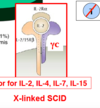Immuno for Exam 5 Flashcards
(176 cards)
obligate parasites
viruses capable of reproducing only within a living host cells
Universal features of all viruses
- one or more viral genome segments (RNA or DNA)
- capsid
capsomeres
each face of virus has a triad of identically placed proteins
larger viruses simply have more subunits
various rotational symmetries
most economical way of buildoing a shell - change volume!

Baltimore Classification scheme
classification based on how protein is made and how virus generates mRNA.
how do you get to RNA?
has to be readable my machinery

Group I - dsDNA
make mRNA from cell machinery
papovavirus, papillomaviruses, herpesviruses, adenoviruses
Group II - + ssDNA
make second strand of DNA and then make a lot of RNA
Group III - dsRNA
make single strand mRNA
has own RNA pol which copies negative strand to make a lot of positive strand that gets translated and packaged
once in a new capsid, positive strand is copied to make a negative strand and make dsRNA
Group IV - ssRNA +
i.e. polio
can be read by ribosomes - usually make neg strand to make more pos strand
make template of self and then make more and more
Most positive-strand viruses (Group IV) often make a negative strand copy of themselves: this serves as (a) the template for making more viral genomes and (b) a way to make MORE copies of the positive strand to be translated into proteins.
the RNA is ‘infectious’ in the experimental sense because if introduced directly into a cell without any viral proteins being present it can be translated into the replication proteins including an RNA-dependent RNA polymerase and amplification will follow….
Group V - ss RNA -
i.e. flu
have to make + strand to make mRNA
Group VI - ssRNA +
i.e. HIV
use RT to make ssRNA into dsDNA
then make mRNA
Group VII ds DNA
make ssRNA then rt to make ds DNA
dsDNA-RT virus
+ RNA
can make peptide right from the strand
RNA-dep RNA polymerase
used to make negative (antisense) RNA into positive (sense) RNA so it can be translated
cells don’t have, viruses bring it
often an amplifying step to make more RNA/protein
positive strand ssRNA
no RNA-dep RNA pol, translate immediately, infectious
in reality - makes a lot of negative sense ssRNA too as a template to make more + ssRNA - some to be packaged and some to be translated
negative strand ssRNA
RNA-dep polymerase, transcription first, non-infectious
dsRNA
RNA-dep pol
transcription first, non infectious
structural proteins
components of capsid and envelope
protection btwn cells - some stable, some sensitive
virion-associated enzymes
polyemerase, integraze, enzymes needed to integate into chromosomes
budding
how enveloped viruses are releaesd
cell lysis
how non-enveloped viruses are released
zoonosis
jump from animals to humans
i.e. ebola
from wild and domesticated animals creates a changing landscape of viral disease
virus sensing system
virus has things that activate it
TLRs - rec RNA and DNA
RLRs - rec viral RNA
CDRs- rec viral DNA
stim production of IFN alpha and beta
secete to nearby cells

IFN a/b signaling
bind to IFNAR (same cell or new cell)
TYK2/JAK
STAT/STAT/IRF
stim ISGs - IFN stim genes

PAMPS
general indicators of viruses and ther pathogens
dsRNA
cytDNA
nakedDNA (no chromatin)
viral genome replication intermediates
capsid proteins/env glycoproteins





























